As performing arts organizations around the world shut their doors to in-person performances in early 2020 in response to the COVID-19 pandemic, the Center for Puppetry Arts in Atlanta, Georgia was able to take advantage of our existing Digital Learning Department to expand their international virtual audience from 9 countries to over 94 countries.
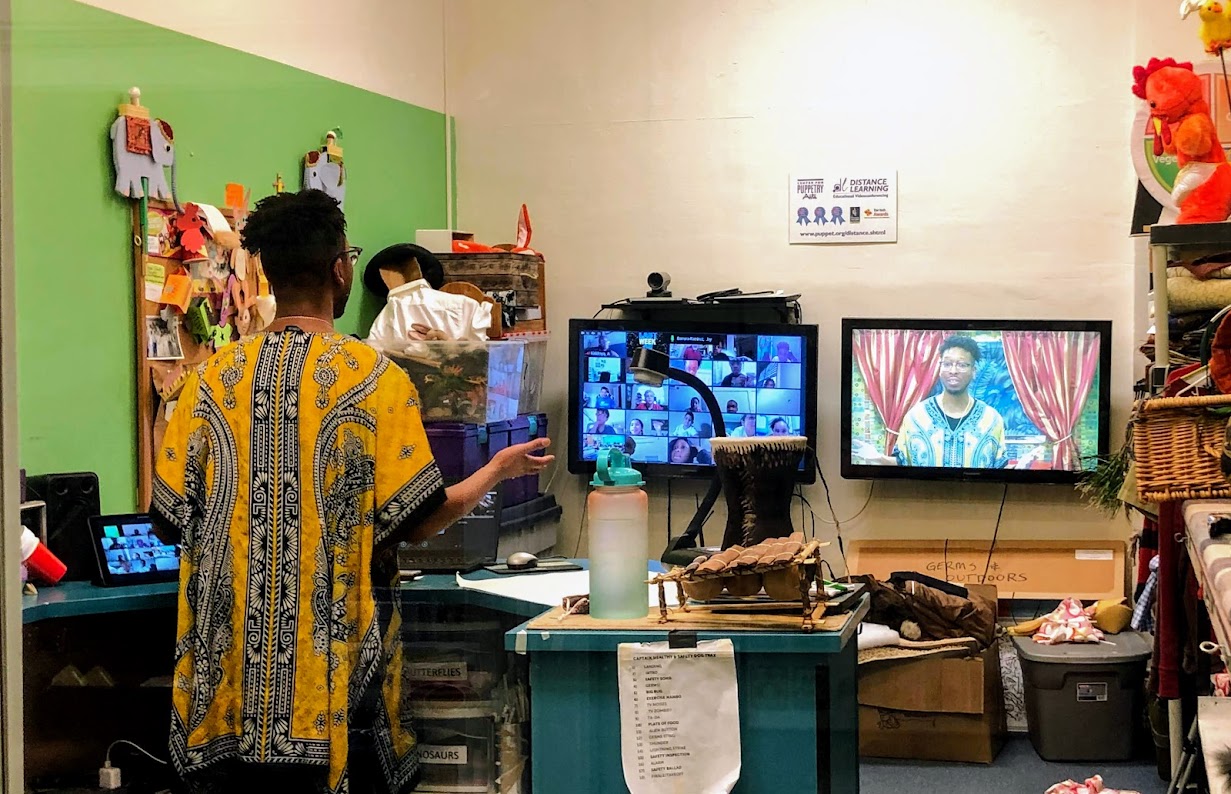
The Center opened its doors in 1978 with Kermit the Frog cutting the ribbon and opening up a whole new world of puppetry to the Atlanta community. The vision of our founder Vincent Anthony led us to become the nation’s largest nonprofit devoted to the art of Puppetry, having two professional theaters performing original shows, world-class museum collections and an education department. However, what most people in Georgia did not know until that fateful week of March 16th, 2020, was that in the corner of the 3rd floor of the Center for Puppetry Arts was an award-winning department that had been doing virtual programming since 1998.
The Digital Learning (DL) Department was created from the beginning to be independent and self-sufficient. We incorporate all the programming facets of the Center, including museum, education, and performances, both for educational and entertainment purposes. Digital Learning was poised to connect remotely with educators. We had already been working directly with classroom teachers to create programs that enhance subject matter with hands-on puppetry activities related to class curricula, with science-based, social studies, language arts and other subject-focused programs.
In the beginning, we were part of the GSAMS program (The Georgia Statewide Academic and Medical System), connecting to rural schools across Georgia, by utilizing the carts and video screens that are used by physicians for telemedicine calls that the schools already owned. Due to distance, the students we connected to would never have the opportunity to come to our facility, but we were able to bring our quality programming to them virtually. We were able to develop remote performance skills and give access to students we had never been able to reach.
GSAMS lost its funding, and we were faced with a decision, close the department, or take our crafted arts-integrated programs to schools on a national level. Now, 23 years later, we are an award-winning content provider connecting to classrooms in all 50 states and over 93 countries. This past year, we were awarded the coveted Center for Interactive Learning and Collaboration (CILC) Hall of Fame Award. This award is given to digital education providers that have been awarded the CILC Pinnacle award for more than 10 years. Because teachers vote on the Pinnacle award, the awards that we have won are the most cherished by our department. Our goal is to offer top-notch programs that teachers continue to believe impact their students’ learning and this feedback inspires us.
We offer 16 different curriculum-based programs that use puppetry by having the students build a puppet that relates to (and often adds to) the subject matter. In 2006, SUNY Albany did a study on our programs. This study’s findings proved that by incorporating a hands-on, interactive experience, student retention rates grew at a higher rate than without it.
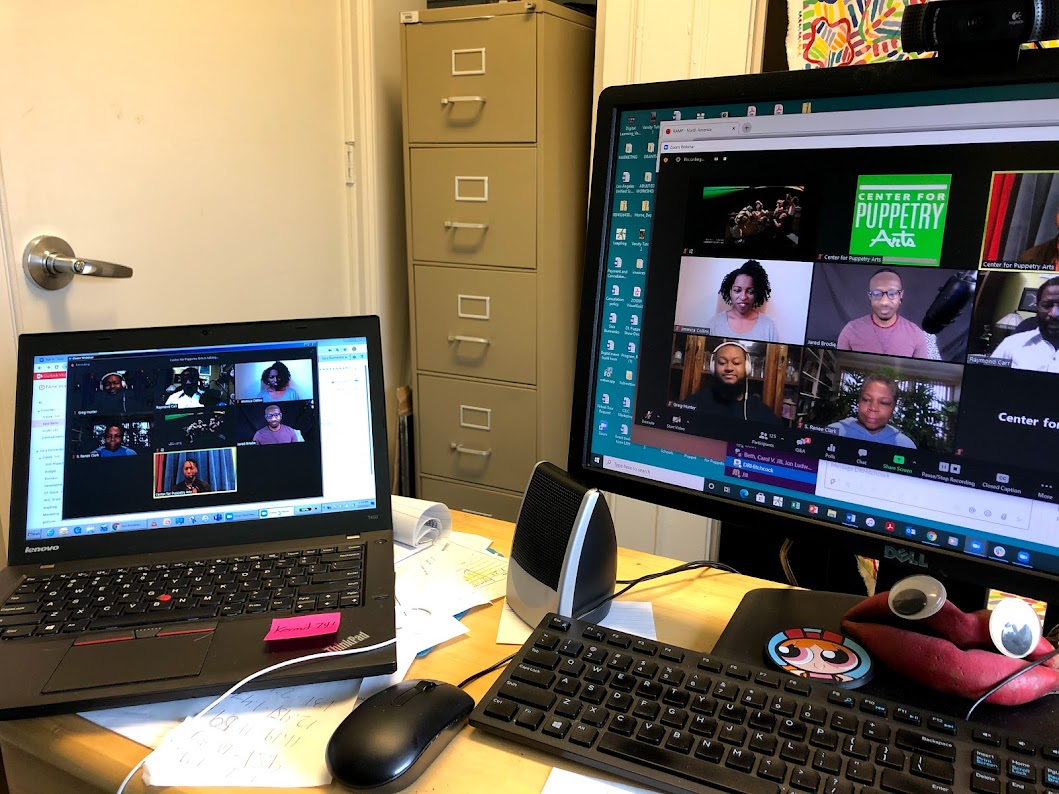
Our programs are presented as if we are the teachers in the classroom, engaging the students with movement activities, fun questions, and call-and-answer responses. Topics like Dinosaurs, Anansi the Spider, and Exploring Africa are among school favorites. We also offer programs geared solely to puppetry arts, including learning about how puppets are used in other cultures around the world or learning how to create one’s own original puppet.
In the last 8 years, we incorporated live puppet shows into our list of virtual offerings. These shows were created specifically for our studios and, although they do not have a hands-on element, they are designed with the core goals of our other programs, resulting in LIVE interactive engagement that makes you feel as though you are in the theater watching a show.
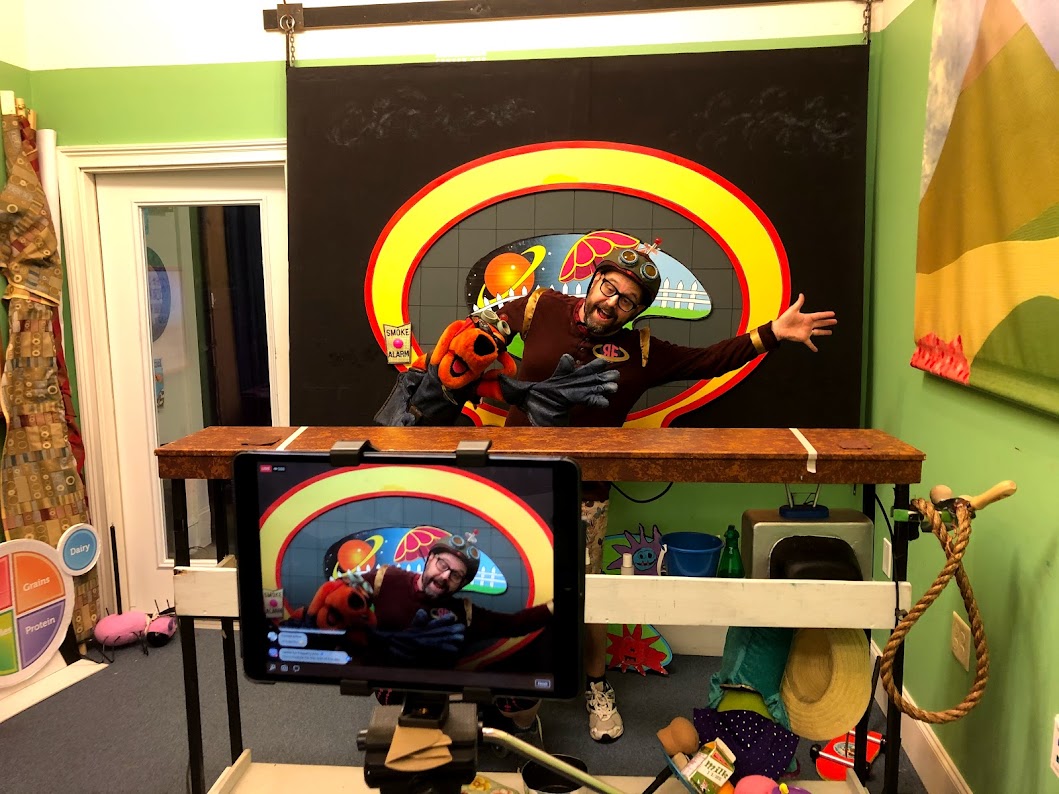
Over the past year, I have reflected on all that the Center for Puppetry Arts was able to accomplish during the pandemic. We were fortunate to already have expertise with virtual field trips for 22 years prior to the pandemic. Our department knew how to optimize the virtual education experience, but there were still many obstacles and unknowns similar to those of other organizations. The Center relied on the DL department to solve the shutdown dilemma, i.e., our DL studios and our virtual platform became the only method of providing programming to audiences. In the first few weeks of the pandemic shutdown, we had to alter our set way of doing things, which had been fully classroom-oriented to now include offerings for public audiences, and we had to decide the pricing, if any, for this expanded content. Our small department now had to take the lead on altering content into a digital format, develop new online programming and delivery strategies, and train other users on our platform. Like most arts organizations figuring out how to dive into the virtual landscape, we too had to adapt to the new world. The schools and organizations that had been the cornerstone of our success dropped off the radar, as COVID sent our audiences back home. Luckily, we had a Distance Learning staff nimble and capable enough to adapt to the unpredictable landscape.
Having been a self-sufficient department suddenly at the helm of everything overnight took some maneuvering; happily, after the first few weeks, we were able to get an operational plan in place that could be implemented by Center-wide programming leaders. Our programming leaders needed to refocus their energy and start imagining their programming in the virtual space, resulting in the creation of new content we could offer our audience.
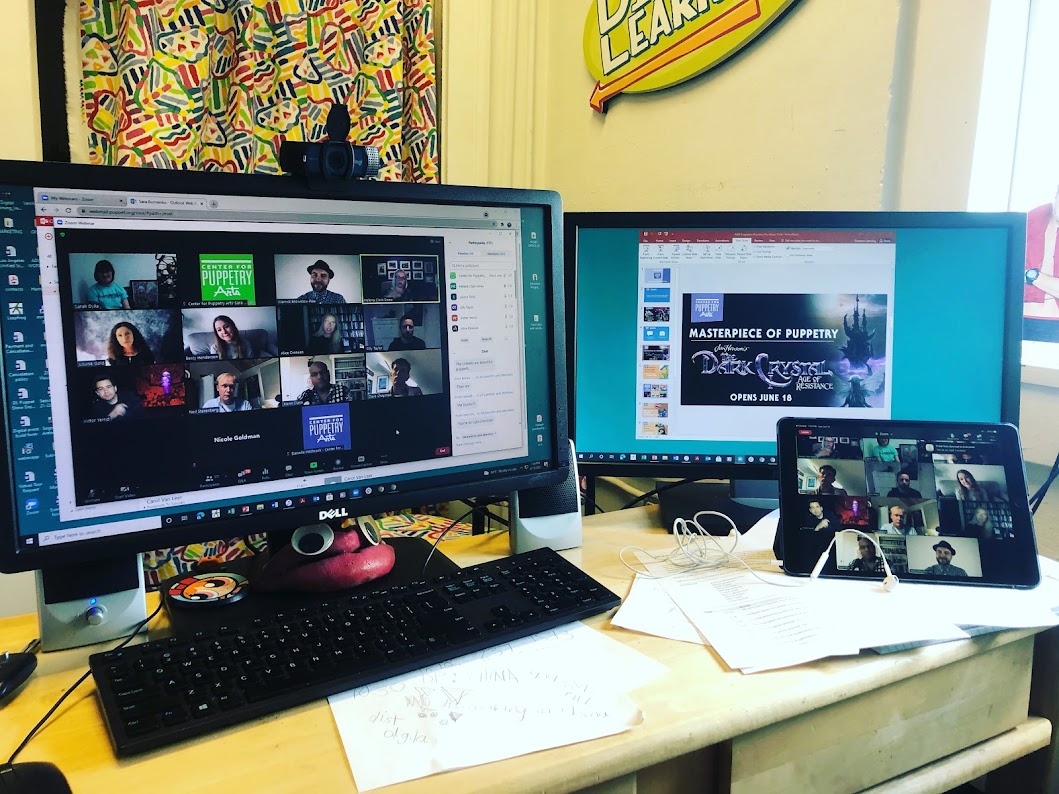
Over the weekend of March 15th, 2020, we watched along with the rest of the world as many of our normal activities around the country were canceled due to the coronavirus. By Monday the 16th, the city of Atlanta was already talking about closing businesses and sheltering in place. We at the Center were told to pack up what we thought at the time would be the “two weeks” working from home. As we were all trying to wrap our heads around the impact that COVID would have on our jobs, our families, and our day-to-day lives, the DL department along with the Center leadership team started to focus on what we could do to stay connected to our patrons. It was obvious that the DL department was the key to making that happen. It became apparent over the next few days that having the platform and experience to connect virtually was not enough to transform our programs from teaching schoolchildren from our studios, to reaching families in their homes and offering them the type of programming that they needed.
One very real obstacle was that our program offerings were designed to be delivered from our studio spaces; there had been no reason to design them to be taught from anywhere else. We have puppet shows that have props and sets, sound cues and staging. The space itself is an integral part of the performance.
With the Center shutting down, we knew it was important to film whatever content we could so that we would have content once the DL department could no longer work from the studios. DL guided our colleagues in developing an action plan for the Center. On Monday the 16th, we assisted the Museum staff in recording our in-person gallery tours, and DL started recording our puppet shows in the studio.
March 17th was the last day that employees were allowed in the building, with the exception of the Digital Learning staff and a limited property crew.
On March 18th my staff and I were ready to teach our programs and perform our shows virtually to a public audience. Our programs are sold to classes at a group rate. When we realized that people were home, some uncertain of the fate of their jobs, a unanimous decision was made to offer all-free content. It was our mission to add a little emotional safety to children and their families during those first weeks and to be as accessible as possible to broad audiences across the world. At first, we connected using our ZOOM rooms, (which we had been using for the past 8 years). The Center’s Marketing Department sent out emails and posted links on social media to let our audience know about the offerings. What we didn’t expect was that, within minutes of opening our ZOOM rooms, they would become completely filled. Children and parents, unfamiliar with the ZOOM technology, created a flood of calls for unexpected customer support.
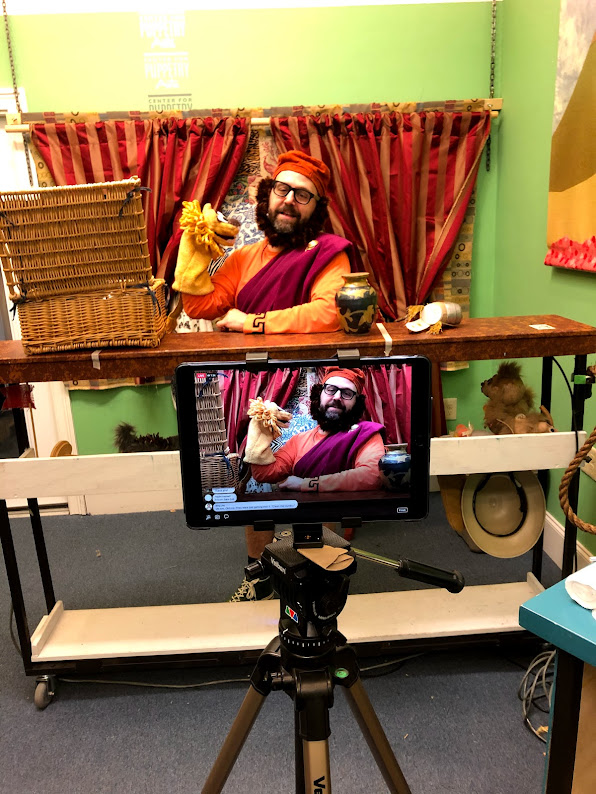
By March 20th, we decided to change the content delivery method we had been using with our classroom audiences for all the years (20+) we had been in the virtual business. That weekend, we worked with our Marketing Department to develop a practical schedule. Once we had something in place, other departments joined inexecution of the plan.
We took a look at what we thought could succeed digitally and went to work.
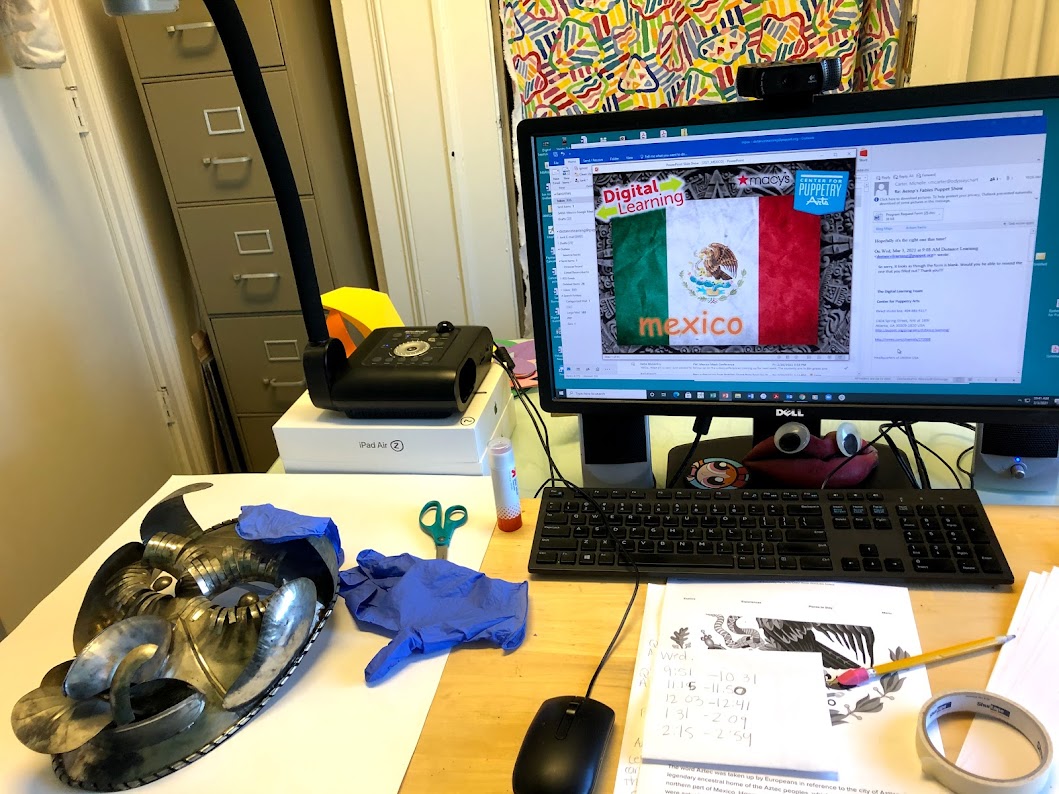
We knew we needed the following things to be successful:
- Easy accessibility
- Free content
- A set and predictable schedule
- A marketing strategy to inform parents of our offerings
- New or altered roles for staff and leaders from all departments
All of these things fell under the new mission we created during COVID “Keep our audiences engaged and connected during this difficult time”:
- Accessibility
We had puppet shows that were already designed for the screen, having been presenting them for schools using our video conferencing equipment. We had the content; it was delivering it to our patrons that was the issue. Our organization already had a strong presence on social media, which provided us the opportunity to switch from the ZOOM platform to Facebook LIVE. Our first LIVE stream had 1700 viewers, and at that moment, we knew the pivot we made would work.
- Free
This was an obvious decision from the start. Experiencing the impact that COVID was having on the mental wellbeing of parents and children, we knew we had to be a beacon of light. Our mission at the Center has always been to inspire wonder and be an escape into the realm of puppets, and we wanted to make sure to connect to anyone who wanted and needed us.
- A Set Schedule
Our main audience is children and families. In the beginning, we focused on that demographic, knowing that parents were trying to keep their jobs while figuring out how to manage their children’s education and care. We also knew that children and adults thrive when they have a set schedule, and we recognized that COVID was creating incredible stress due to its uncertainty. Working with all the departments, Marketing helped tailor a program schedule for our Facebook feeds.
- Marketing Strategy
Our Marketing Department got to work. They created our @Home programming, working closely with the programming departments to create weekly content schedules. Pushing out the content on social, press releases, and emails to our audience lists was key to getting the word out.
- New or altered roles for staff and leaders from all departments
The majority of the first two and a half weeks consisted of the Digital Learning department tweaking our content and sharing it with audiences. By doing that, it gave the rest of our staff time to develop game plans of their own. The Education Department developed mini prerecorded puppet lessons, the Museum Department offered recorded tours edited in segments and created virtual, interactive puppet trivia nights. Our Production staff used archival show footage and offered viewings with talkbacks from the creators and puppeteers that had been part of the original shows.
Eventually the city of Atlanta shut down completely, and the DL department could no longer come into the studios. Utilizing the puppet show recordings that we had made at the beginning of the pandemic, we were still able to connect from our own homes in makeshift studios, while ensuring incorporation of live interactive components with our audiences. We were also able to use these performances for a new international corporate customer that wanted to offer family-friendly programs for their global employees to enjoy and engage together.
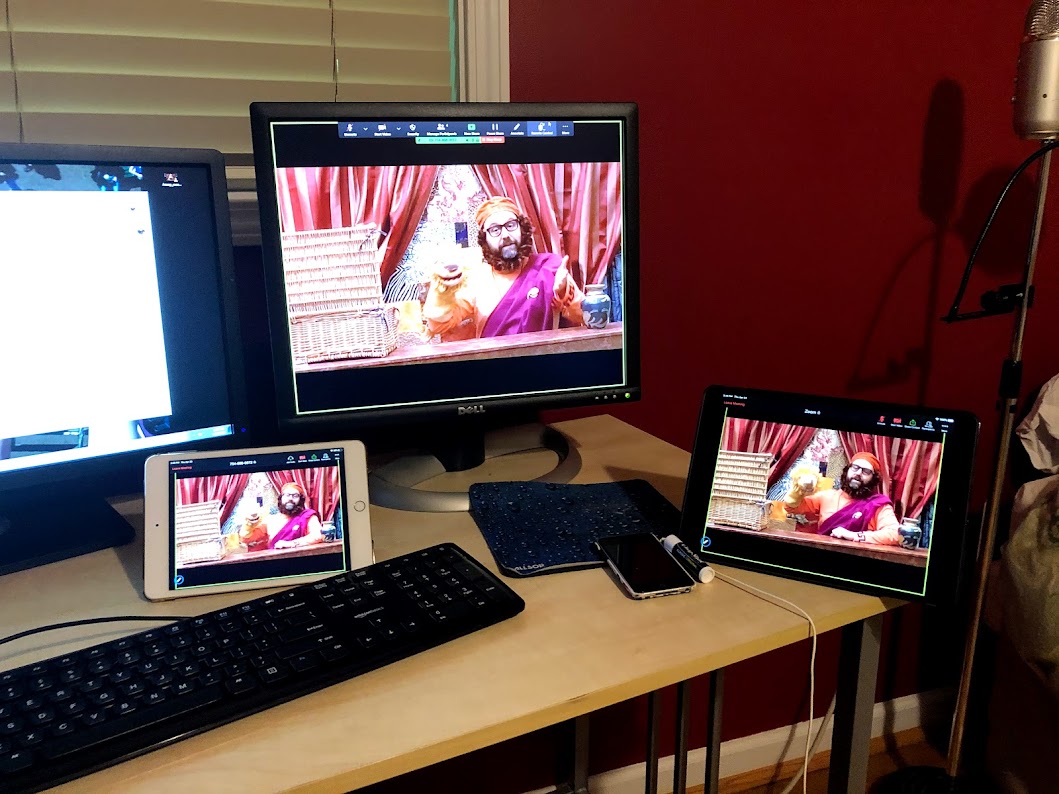
Our Membership team also utilized these recordings, having us “perform” members- only events and arranging talkbacks with the museum staff.
As the year progressed, everyone found their footing in their new roles. We purchased a ZOOM webinar room for our paid offerings, thanks to funding from WarnerMedia. Our production staff translated their skills to the virtual world, being on the backend of many of those offerings. By the summer, we hired an artist-in-residence to set up shop in one of our Digital Learning studios, and virtually offered a summer series of live performances five days a week. The Education department’s popular Create-a-Puppet Workshop was made into an online offering that we were able to sell components of on Etsy. Audiences could pre purchase the kit and then the purchasers could connect to a puppet-building class in live, interactive ZOOM sessions.
When Georgia began to loosen its restrictions, the Center cautiously reopened its museum exhibits with limited capacity. As much as we wanted to see our patrons back, we also were dedicated to keeping our staff and artists safe. One concern was how to interact with our museum visitors, but also minimize face-to- face interaction. Newly inspired by our digital dexterity, we created prerecorded “Welcome” videos that guided the patrons from the entrance of the building to the museum, where they were then greeted by our virtual museum docent. Our virtual docent talked live with our Museum guests through video monitors while located safely in other areas of the Center.
We learned a lot during this time and grew our digital audiences global reach from 50 states and 9 countries to connecting now to audiences in over 94 countries.
Throughout the year I have found myself in conversations with friends, colleagues, educators and my own 16-year-old daughter about virtual learning and the negative impact it has had. Listening to teachers and parents complain about the technology was heartbreaking for me, as I was finally at the point in my 15 years of virtual teaching that I didn’t have to put classroom teachers through remedial virtual video conference training.
It is not the virtual environment or ZOOM that is the problem; it is that teaching online requires an entirely different skill set from teaching in person.
With virtual, one needs to think about the students/participants in a completely different way, and it must be engaging to all types of learners. So, why do we keep winning awards? Because we know that LIVE, engaging interactions that incorporate multiple intelligences and hands-on interaction are key to being effective educators in the virtual realm.
A lot of people tried to translate the in-person experience directly to the virtual platform, and the results were not ideal. Many new users of virtual entertainment do not necessarily appreciate that what you do in person may not translate well to the virtual realm.
There is a crucial place for virtual teaching post-pandemic, as there was pre-pandemic. Virtual field trips provide access to places and educational and creative experts not achievable in person. They connect students and engage them in ways unavailable to classroom teachers.
My hope is that other organizations appreciate what we at the Center for Puppetry Arts have known since opening the Digital Learning studios in 1998. Properly executed virtual field trips provide the world audiences an amazing universe they would otherwise never be able to experience.
Sara Burmenko ([email protected]) is the Digital Learning Director for the Center for Puppetry Arts in Atlanta, Georgia (https://puppet.org/). All photos by Sara Burmenko.
